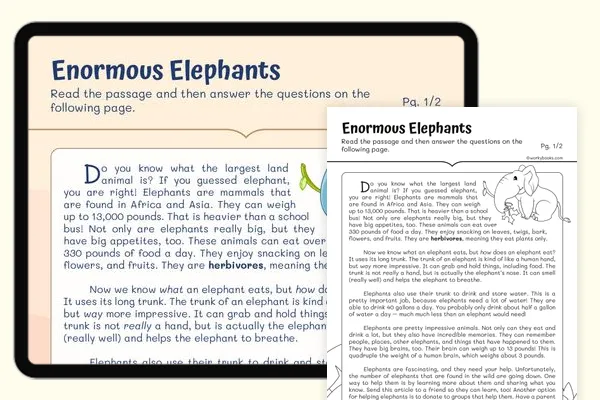How Does a Hurricane Form? — Passage
Hurricanes are powerful storms that begin over warm ocean water. They are also known as tropical cyclones or typhoons, depending on where they happen in the world. These storms can bring heavy rain, strong winds, and big waves that cause flooding and damage. But how does a hurricane actually form?
It all starts with warm, moist air over the ocean. When the ocean’s surface reaches at least 26°C (about 79°F), it heats the air above it. This warm air rises and creates an area of low air pressure. As the warm air rises, it cools and condenses into clouds and thunderstorms, releasing even more heat into the air. This heat helps more warm air rise, fueling the storm.
As more air rushes in to replace the rising air, the system begins to spin due to Earth’s rotation. This spinning is called the Coriolis effect. If the storm continues to grow and the wind speeds reach at least 74 miles per hour, it becomes a hurricane.
The center of a hurricane is called the eye. It’s usually calm and clear, but it’s surrounded by the eyewall, which has the most dangerous winds and heaviest rain. Hurricanes lose strength when they move over cooler water or land, where they no longer have warm ocean air to keep them going.
Scientists use satellites and special tools to track hurricanes and warn people early. Understanding how they form helps communities prepare and stay safe.
Fun Fact: A fully formed hurricane can release more energy in one day than all the world’s power plants combined!
Where do hurricanes begin?
Over mountainsOver cool land areasOver warm ocean waterIn icy polar regionsWhat causes warm air to rise over the ocean?
Cold air from aboveStrong ocean wavesHeat from the sun warming the oceanClouds forming quicklyWhat happens when warm air rises and cools?
It disappearsIt sinks back downIt forms clouds and thunderstormsIt freezes into snowWhat is the Coriolis effect?
A type of cloudThe reason the storm spins due to Earth's rotationThe way hurricanes make wavesA cooling effect from rainWhat wind speed must a storm reach to be called a hurricane?
25 miles per hour50 miles per hour74 miles per hour100 miles per hourWhat is the calm center of a hurricane called?
The coreThe cycloneThe eyeThe storm zoneWhat is the main idea of the passage?
Hurricanes form when it snows on the oceanHurricanes are the biggest storms on landHurricanes form from warm ocean air, rising air, and spinning motionHurricanes only happen in winterWhy do hurricanes weaken over land?
They hit trees and buildingsThey get too heavyThey lose warm ocean air, which fuels themThey get pushed by the wind



















